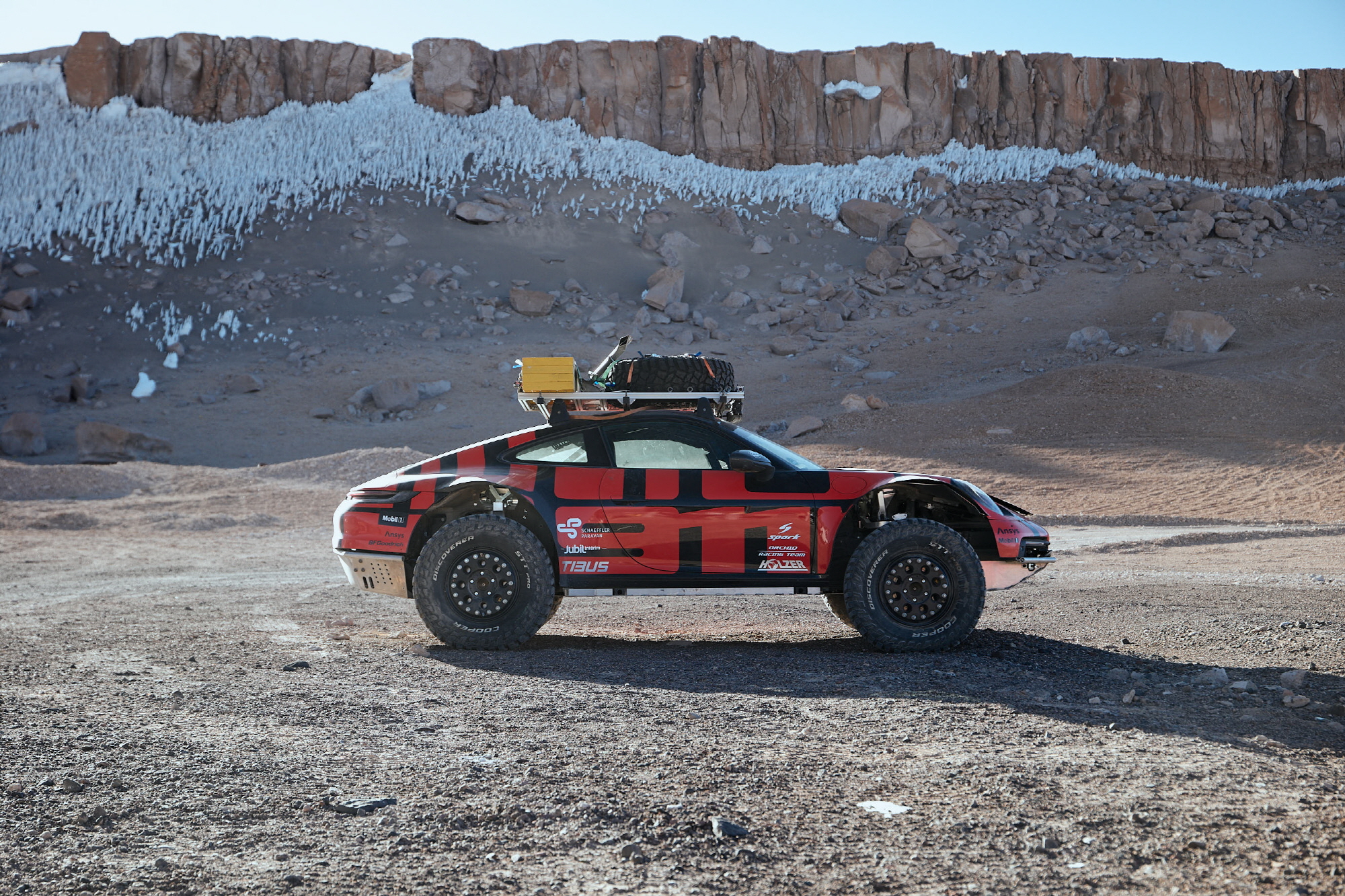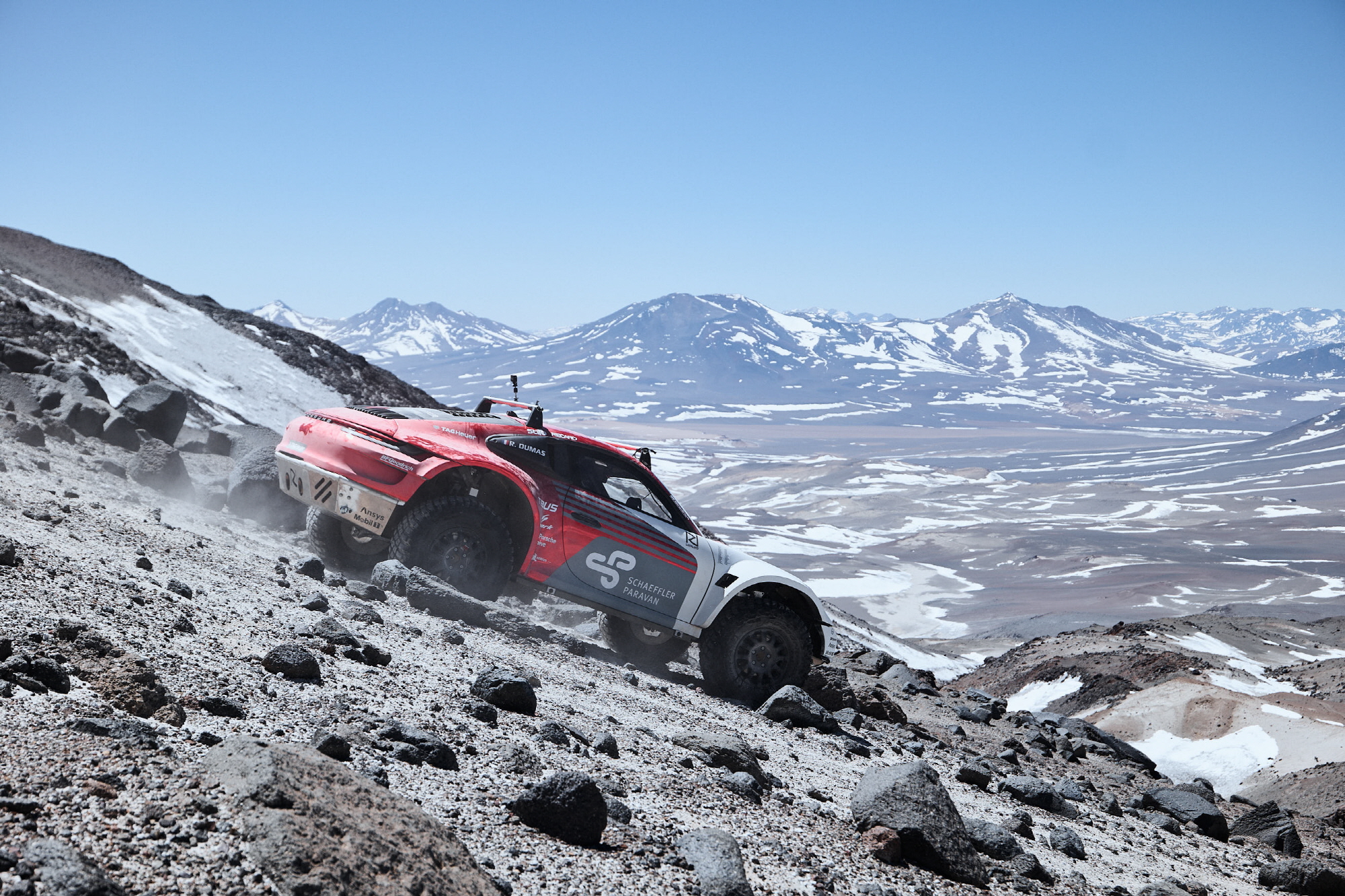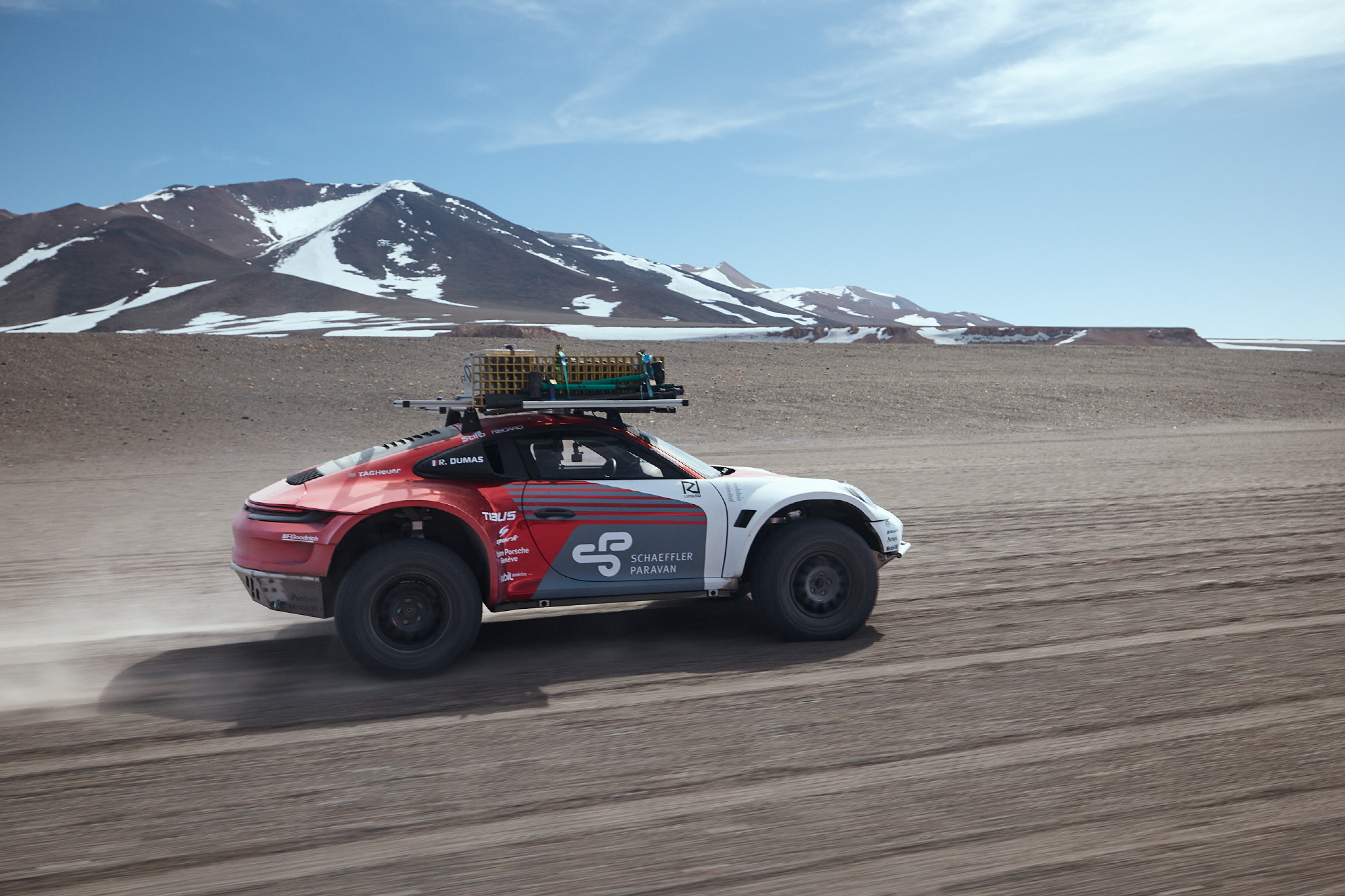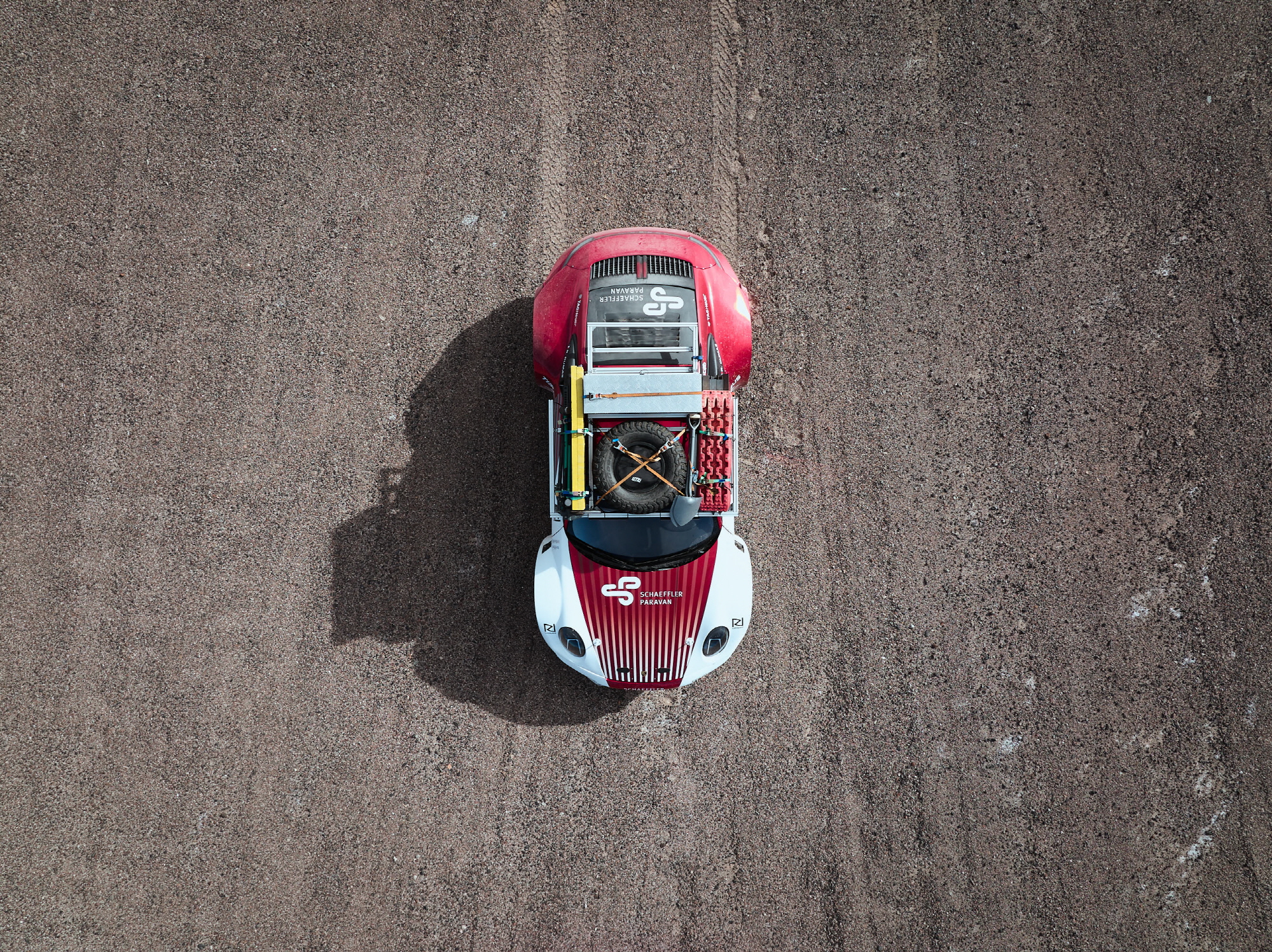
Porsche has conducted extreme performance testing of the newly improved Porsche 911 in the harsh environment of the Chilean volcanic region.
For over 60 years, the Porsche 911 has proven its exceptional performance on both track and road. Now, a unique pair of 911 sports cars is opening a new chapter by undergoing tests in an environment devoid of roads, with thin air, sub-zero temperatures, and no vegetation—pushing the boundaries of performance.
Leading the team is Romain Dumas, a driver from the Porsche Motorsport factory, who chosen the steep slopes of Ojos del Salado, the world’s highest volcano in Chile, as the first test location for the 911’s limit testing expedition. Through this drive, the Porsche 911 was recorded as one of the vehicles that reached extreme altitudes.

Romain Dumas’s 911 successfully climbed to 6,007 meters (19,708 feet), undergoing performance evaluations in extreme conditions, including temperatures reaching minus 30 degrees Celsius and oxygen levels halved at high altitudes. The testing continued past sloping terrains and icy patches until it reached a massive wall of snow and ice near the summit, where the vehicle could no longer proceed.
Romain Dumas remarked, “I experienced unforgettable special moments in a region where beauty and brutality coexist, and the only thing higher than us when we reached the top was an aircraft.” He added, “All team members were solely focused on studying the vehicle. From the first ignition, we pushed this unique 911, which was rugged but nimble, to the extreme, yet it felt comfortable.”
Additionally, Romain expressed, “I want to pay my respects to everyone who has ascended higher than us. As we got closer to the summit of the volcano, the team encountered countless massive walls of ice and snow, but we reached the incredible height of 6,000 meters, where the vehicle could no longer move forward. I’m so proud of the vehicle and my team that proved its capabilities on the first test, and I hope to undertake many more adventures in the future.”
Frank-Steffen Walliser, Vice President of Porsche AG’s Vehicle Architecture and Characteristics division, entrusted the 911 project to lead engineer Michael Löschler.
Michael Löschler, Director of the 911 Finished Vehicle Model Lineup, stated, “Creating a 911 that has never been seen anywhere in the world was a magical endeavor, made possible by a small group of passionate engineers. The 911, which has already proven itself on tracks and roads, is now shifting its focus to places without roads.” He added, “For Porsche, theoretical experiments mean finding the most extreme environments, and this time, we successfully completed tests on the highest volcano in the world.”

The vehicles used in this trial were based on the 911 Carrera 4S and equipped with a 6-cylinder turbocharged boxer engine, producing 443 horsepower, along with the existing 7-speed manual transmission. The 911 already proved its exceptional performance through a robust yet lightweight chassis structure, short wheelbase, strong output, and handling at high altitudes. Based on this, engineers from Porsche’s research and development department near Stuttgart collaborated closely with Romain Dumas’s motorsport team to creatively develop a vehicle suitable for volcanic conditions.
The two vehicles were first fitted with roll cages, carbon fiber seats, and harnesses to meet safety requirements. To increase the existing clearance of 350mm, portal axles were added. New and shorter gear ratios allow for precise and smooth throttle input at low speeds, perfectly matched with newly fitted large off-road tires. Thanks to the very lightweight yet sturdy aramid fiber underbody protection, driving across rocks was made possible.
The Porsche Warp Connector was also added. This system, developed for motorsport, creates a mechanical link between the four wheels, allowing for a consistent wheel load and maximizing traction even when the chassis must endure extreme steering angles. The adjustable manual differential lock is used alongside an improved steer-by-wire system. Additionally, the vehicle’s body was modified to accommodate the wider 310mm off-road wheels and tires, and a winch was added to the front of the vehicle.
To enable the vehicle to traverse extreme off-road sections without being affected by damage, the cooling system was relocated upward. The body finish features two distinctive liveries, one adorned with the Porsche Motorsport colors that decorate the 963 LMDh race car, and the other designed by the team in Weissach with a 911 theme.
Walliser commented, “Over 30 years ago, the Porsche engineering team fitted the 911 with all-wheel drive to conduct various tests. I take great pride in the Porsche engineers, who possess an innate curiosity and drive to explore new ideas and push boundaries.”
Finally, he emphasized, “Such projects are a vital element in defining the Porsche team identity.”

Lee Sang-jin daedusj@autodiary.kr

